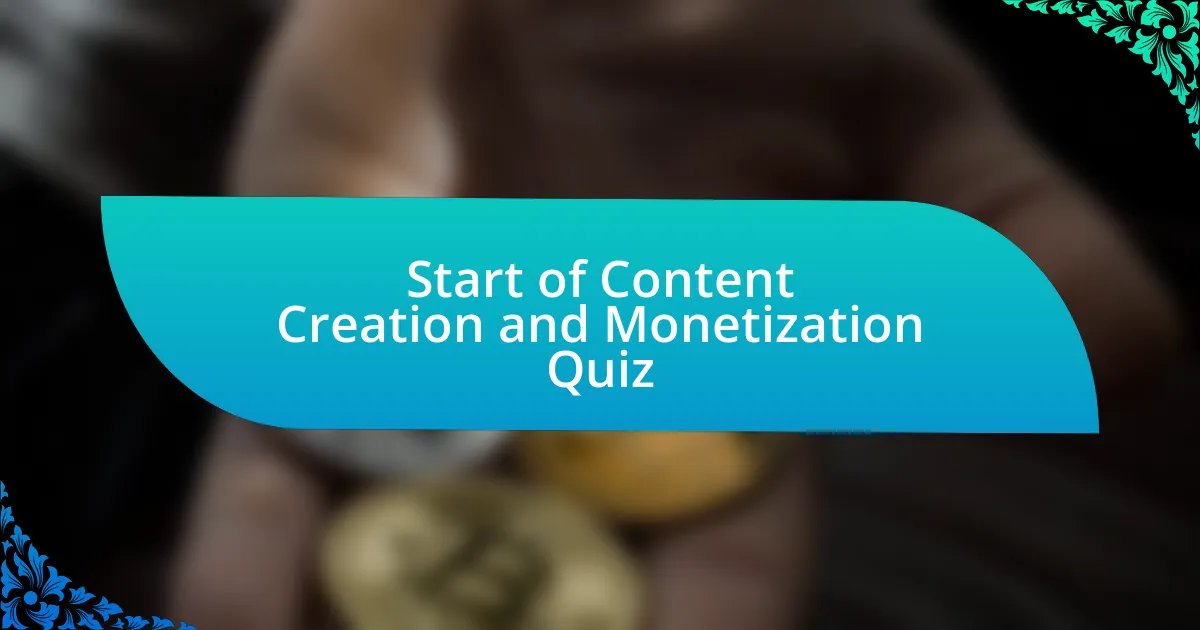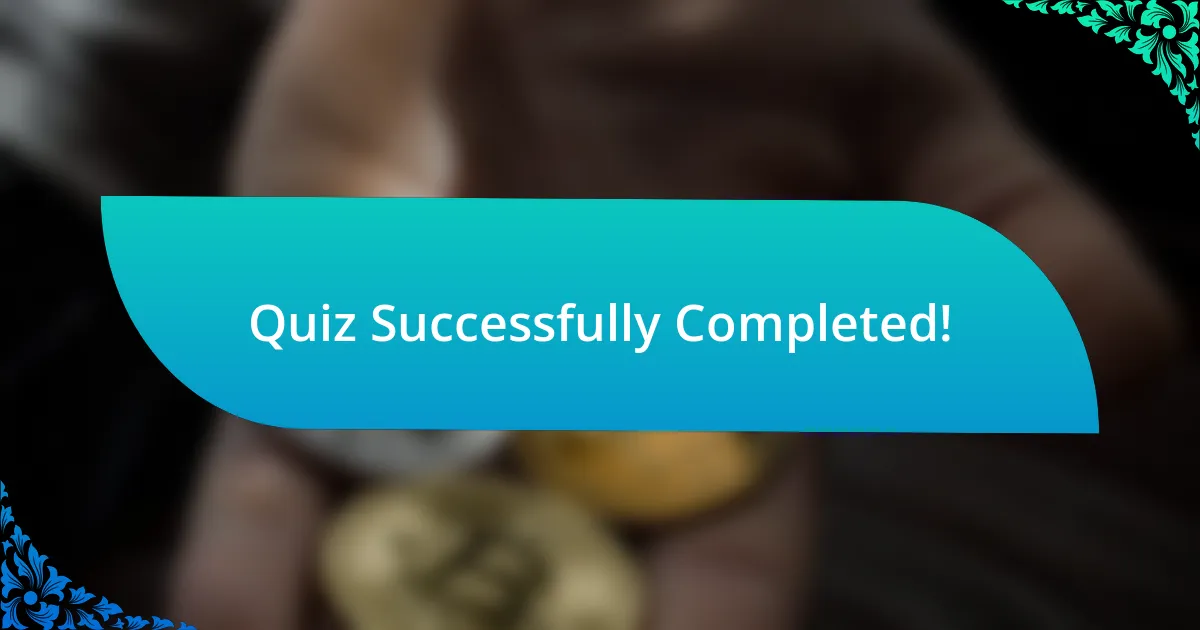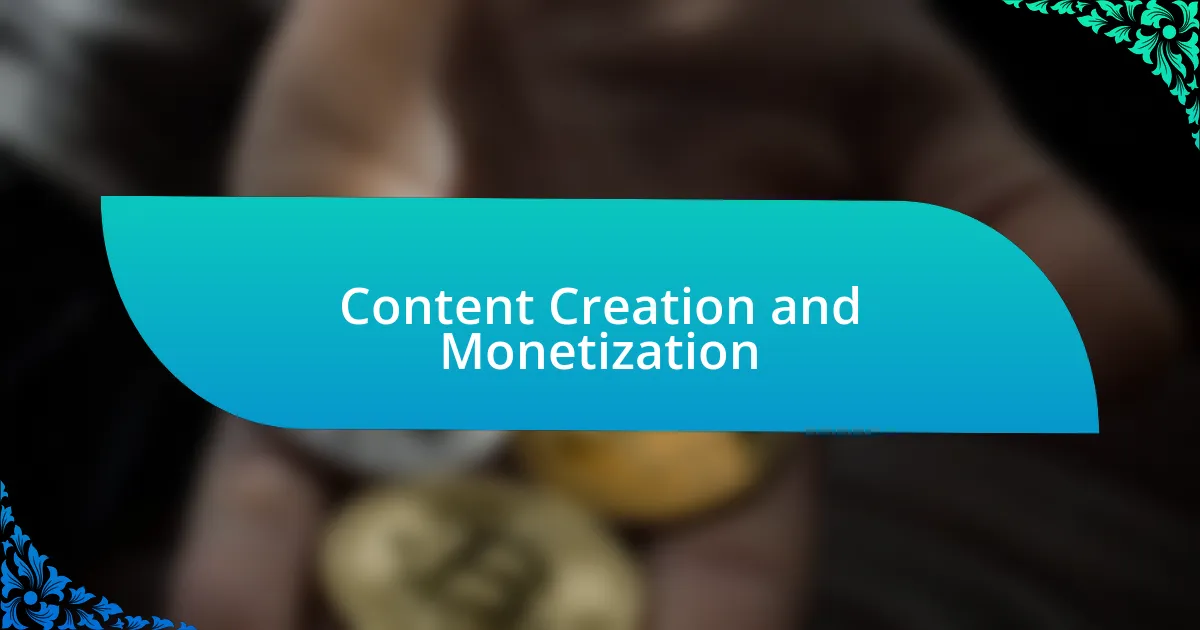
Start of Content Creation and Monetization Quiz
1. What is the significance of Ethereum in content creation and monetization?
- Ethereum restricts content creators from earning revenue effectively.
- Ethereum eliminates the need for online platforms in content distribution.
- Ethereum offers no financial benefits to content creators.
- Ethereum enables creators to directly monetize content through smart contracts.
2. How can Ethereum smart contracts facilitate content monetization?
- By limiting creators to one-time payments only.
- By requiring all content to be sold through traditional media.
- By only allowing content to be shared for free online.
- By automating revenue distribution through transparent contracts.
3. What is a decentralized application (dApp) in the context of Ethereum content creation?
- A desktop application that requires installation and connects to a central database for content management.
- A decentralized application that runs on a blockchain network enabling peer-to-peer interactions for content creation.
- A mobile app designed specifically for individual content creators without blockchain integration.
- A traditional app that relies on a centralized server for hosting and processing user data.
4. How do NFTs (Non-Fungible Tokens) serve content creators on the Ethereum network?
- NFTs are used to create online courses for free.
- NFTs allow content creators to sell their digital assets directly to buyers.
- NFTs enable content creators to host live events for free.
- NFTs help content creators eliminate all types of advertising.
5. What role do ERC-721 tokens play in content monetization?
- ERC-721 tokens restrict user access to all content.
- ERC-721 tokens are exclusively for trading physical goods.
- ERC-721 tokens standardize all content types into one format.
- ERC-721 tokens enable unique ownership of digital content.
6. How can content creators leverage Ethereum for crowdfunding projects?
- Content creators can only use Ethereum for social media posting.
- Content creators can only use Ethereum for crypto trading.
- Content creators can use Ethereum to reduce video quality.
- Content creators can use Ethereum to create and sell NFTs for fundraising.
7. What advantages does Ethereum offer over traditional payment methods for content creators?
- Payment via postal checks
- Direct payments via smart contracts
- Payment through bank transfers
- Payment using physical currency
8. How does Ethereum enable the creation of unique digital identities for content creators?
- Through manual approval processes.
- By using email authentication only.
- Through the use of unique smart contracts.
- By requiring social media verification.
9. What is the impact of gas fees on content monetization using Ethereum?
- Gas fees have no effect on content monetization in Ethereum.
- Gas fees enhance the profitability of content creation on Ethereum.
- High gas fees can significantly reduce profits for content creators on Ethereum.
- High gas fees encourage more creators to use Ethereum for monetization.
10. How can content creators utilize Layer 2 solutions on Ethereum to reduce costs?
- By creating more complex smart contracts that increase costs.
- By processing transactions off-chain to minimize gas fees.
- By avoiding Ethereum entirely and using only centralized servers.
- By running all operations directly on the Ethereum mainnet indefinitely.
11. How do decentralized finance (DeFi) applications benefit content creators on Ethereum?
- Content creators rely solely on advertising revenue from sponsors.
- Content creators must pay to list their work on DeFi platforms.
- Content creators gain free access to exclusive coding tools.
- Content creators can receive cryptocurrency directly from fans.
12. What role does the Ethereum community play in supporting content creators?
- They create all content for the creators.
- They charge creators for using the blockchain.
- They facilitate direct donations to creators.
- They review and approve every piece of content.
13. How can Ethereum-based wallets facilitate content transactions?
- By managing social media accounts for content sharing.
- By promoting content through email marketing campaigns.
- By linking content creators with physical stores for sales.
- By enabling secure peer-to-peer transactions for digital content.
14. What are the benefits of using Ethereum for distributing digital assets?
- Increased latency in asset transfer.
- Enhanced security and transparency of transactions.
- Higher fees for digital asset distribution.
- Limited access to smart contracts.
15. How can tokenization of content enhance revenue for creators on Ethereum?
- By stopping content distribution.
- By reducing the number of followers.
- By creating unique NFTs for their content.
- By limiting access to their content.
16. What strategies can content creators adopt to maximize their earnings on Ethereum?
- Utilize membership platforms for exclusive content.
- Focus solely on creating free content for all.
- Rely entirely on traditional advertising methods.
- Avoid engaging with the audience on social media.
17. How are creators using Ethereum for managing copyright and ownership of their content?
- Creators are utilizing smart contracts on Ethereum to register ownership of their digital content.
- Creators are relying on social media platforms for ownership verification.
- Creators are selling their content through traditional publishing houses.
- Creators are using paper contracts to manage copyright and ownership.
18. What platforms support Ethereum for content creation and monetization?
- YouTube
- TikTok
- Snapchat
19. How does Ethereum enable peer-to-peer content distribution?
- By sharing files via email attachments.
- By using smart contracts on a decentralized network.
- Through centralized servers storing data.
- Through traditional web hosting services.
20. What is the role of DAOs (Decentralized Autonomous Organizations) in supporting content creators on Ethereum?
- DAOs hinder content creators by restricting their access to funds.
- DAOs provide funding and governance support for content creators on Ethereum.
- DAOs primarily focus on regulating traditional media companies.
- DAOs charge high fees to content creators for using their services.
21. How can content creators create subscription services using Ethereum?
- Use Ethereum only for social media marketing.
- Rely on ad revenue solely for income.
- Create smart contracts to manage subscriptions and payments.
- Sell physical goods using Ethereum as currency.
22. What features of Ethereum allow for transparent content monetization?
- Smart contracts
- Physical media
- Email newsletters
- Social media sharing
23. How can gaming content creators benefit from Ethereum`s infrastructure?
- They can generate unique digital assets through smart contracts.
- They can only earn revenue from traditional ads.
- They have no benefits from using cryptocurrencies.
- They can only sell physical merchandise.
24. What are the challenges of using Ethereum for content monetization?
- Ethereum guarantees instant payments for all creators.
- All content is automatically protected under copyright on Ethereum.
- Ethereum requires no digital wallet for transactions.
- High gas fees can reduce profit margins for creators.
25. How can Ethereum foster collaborations between content creators?
- By utilizing smart contracts for revenue sharing.
- By hosting live events and workshops.
- By creating exclusive offline content only.
- By offering merchandise at local stores.
26. What is the significance of gasless transactions for content creators on Ethereum?
- They require physical delivery of assets.
- They limit the number of transactions per second.
- They reduce transaction fees for creators.
- They increase mining rewards for miners.
27. How can Ethereum enable direct sales of content between creators and consumers?
- Ethereum transactions can take weeks to process.
- Ethereum requires third-party platforms for content sales.
- Ethereum only supports stock trading transactions.
- Smart contracts automate payments between creators and consumers.
28. What is the potential of Ethereum in transforming traditional content industries?
- Ethereum can enable direct creator-to-consumer transactions.
- Ethereum will eliminate all content moderation issues.
- Ethereum will mainly increase content distribution costs.
- Ethereum will create more centralized content platforms.
29. How do crypto rewards systems benefit content creators on Ethereum?
- Crypto rewards systems allow content creators to receive direct payments in cryptocurrency for their work.
- Crypto rewards systems charge users for access to creator content only.
- Crypto rewards systems use advertising revenue to fund creator earnings.
- Crypto rewards systems provide free access to all content without compensation to creators.
30. How can content creators capitalize on Ethereum`s scalability for large audiences?
- By focusing solely on traditional marketing strategies.
- By ignoring blockchain technology completely.
- By increasing the file size of content dramatically.
- By utilizing layer-2 solutions like rollups for faster transactions.

Quiz Successfully Completed!
Congratulations on completing the quiz on Content Creation and Monetization! We hope you found the experience both enjoyable and educational. You’ve tested your knowledge on key concepts and gained insights into how creators turn their passion into profit. Understanding this complex landscape is crucial for anyone looking to engage or excel in content creation.
Throughout the quiz, you likely discovered various strategies for effective content creation. You may have learned about audience engagement, platform selection, and the importance of branding. Each of these elements plays a vital role in not only attracting followers but also in creating a sustainable income. This knowledge is essential for anyone wanting to navigate the ever-changing digital world.
If you’re eager to dive deeper into the topic, we invite you to explore the next section on this page. It’s packed with valuable information on Content Creation and Monetization. This additional content can help expand your understanding and provide practical tips to enhance your skills. Your journey as a content creator is just beginning, and we’re here to support you every step of the way!

Content Creation and Monetization
Understanding Content Creation
Content creation involves the production of digital media, which includes text, images, audio, and video. It serves to inform, entertain, or engage audiences across various platforms. Content creators leverage tools and platforms to distribute their work and connect with their target audience. The process typically includes brainstorming ideas, drafting content, editing, and optimization for different channels. This practice is essential for building brand awareness and nurturing relationships with consumers.
The Role of Social Media in Content Creation
Social media platforms like Instagram, Twitter, and TikTok enable content creators to reach vast audiences. These platforms provide various formats, such as stories, posts, and live streams, which enhance engagement. Creators can interact with followers, gather feedback, and adjust their approach based on audience preferences. Additionally, sharing original content fosters community building and can drive traffic to other revenue-generating platforms, such as blogs or websites.
Monetization Strategies for Content Creators
Monetization strategies are essential for turning content into a source of income. Common methods include advertising, sponsorships, affiliate marketing, and product sales. Creators can earn revenue by partnering with brands to promote products or integrating ads into their content. Moreover, utilizing platforms like Patreon or YouTube’s Partner Program allows creators to generate income directly from their audience. Consistent quality content enhances trust and can lead to increased monetization opportunities.
Analyzing Metrics and Performance in Content Monetization
Analyzing metrics such as views, engagement rates, and conversion rates is crucial for understanding content performance. Tools like Google Analytics and social media insights provide data on audience behavior and preferences. By assessing these metrics, creators can refine their content strategy, optimize for better reach, and enhance monetization efforts. Tracking performance ensures that creators invest their time in what resonates with their audience and generates revenue.
Emerging Trends in Content Creation and Monetization
Emerging trends in content creation include the rise of short-form video content and interactive experiences. Platforms like TikTok and Instagram Reels emphasize quick, engaging formats that attract younger audiences. Additionally, the use of augmented reality (AR) and virtual reality (VR) offers innovative ways to create immersive content. These trends shift monetization strategies as creators explore new methods to engage audiences and generate income through subscriptions and exclusive content offerings.
What is Content Creation?
Content creation is the process of generating relevant and valuable material for a specific audience. This can include text, images, videos, and audio, designed to inform, entertain, or engage users. According to HubSpot, businesses that prioritize content creation experience a conversion rate six times higher than those that don’t.
How to Monetize Content?
To monetize content, creators can utilize various methods such as advertising, affiliate marketing, sponsored posts, and selling products or services. For example, YouTube creators can earn revenue through ad placements via the YouTube Partner Program, where creators receive a share of ad revenue based on views.
Where to Publish Content for Maximum Reach?
Publishing content on platforms like social media (Facebook, Instagram, YouTube), blogs, or streaming services ensures maximum reach. According to Statista, as of 2023, Facebook had over 2.9 billion monthly active users, making it a prime platform for content distribution.
When to Post Content for Optimal Engagement?
The optimal time to post content varies by platform but generally peaks during weekdays, particularly mid-mornings and early afternoons. For instance, studies by Sprout Social show that posts made on Wednesdays at 11 a.m. receive the highest engagement rates across multiple platforms.
Who Benefits from Content Creation?
Content creation benefits various stakeholders, including brands, marketers, and consumers. Brands leverage content for marketing strategies, while consumers gain valuable insights, entertainment, and information. Data from Demand Metric indicates that content marketing generates three times more leads than traditional marketing methods, illustrating its effectiveness.

